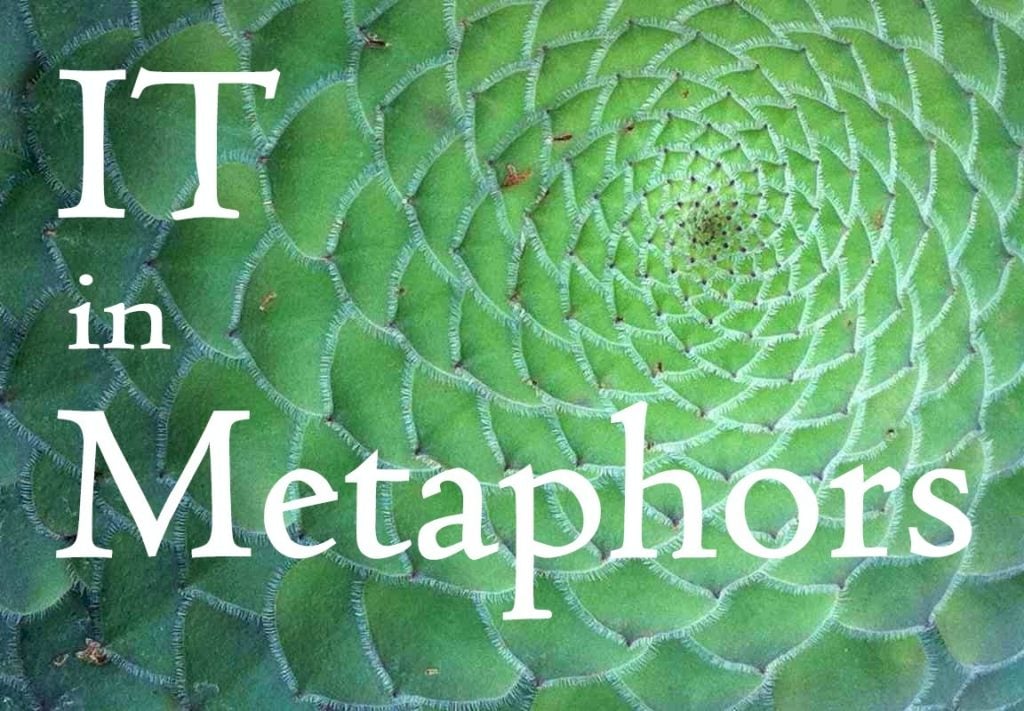
ITpedia is proud to welcome IT in Metaphors as a special interest group. The purpose of this group is to make difficult IT concepts understandable with the help of a metaphor. The initiators are Dirkjan van Zoelen and Jan de Vries. They will do their best to uncomplicate abstract IT related concepts.
As an IT professional you use many concepts that are very common to you. However, you will come across customers, clients and users who may not understand those IT at all. How will you communicate the meaning and value of those IT concepts? What could be better than using a metaphor? A metaphor ensures the concept that is difficult to grasp is conveyed by means of a concept the user is likely to be familiar with. As a result, they immediately understand what you mean.
Which concepts raise questions and can we explain with a metaphor, you ask? Think of concepts with an abbreviation such as ITIL, DevOps, Six Sigma, SLA or ISO standard. Or foreign words, such as Kanban and Kaizen. Brand names such as Docker, about which the first IT article was published in IT in Metaphors recently, are to be metaphorized too.
Yes, the use of metaphors as a concept in IT is huge. Much has already been written about these topics on ITpedia. Think for example of concepts like Framework, Agile, SCRUM, debugging and Lean. These words are not originally IT concepts but they may feel like they are. But when you see those Rugby players standing bunched up, do you think “Hey, that’s SCRUM!”? What about concepts that have been borrowed from other fields, like construction. For example: design, development, build and shipping. All borrowed concepts that are IT metaphors for something with a similar but different meaning. The great thing is that we immediately see an image or movement while thinking about it. There are also compound words such as release train. Explaining those may take more effort, but we welcome the challenge. In IT practice, these IT words can mean something else. That is why making sure metaphors allow readers to visualize something is the challenge for IT in Metaphors.
Do you want to actively think along, write, supplement or just respond then you can! We welcome it. Customers and users who would like an explanation about a certain concept can also participate as a Metaphor Engineer. Under each article there is an addition / comment option, make use of it. You can also contact Dirkjan or Jan directly.
Over time, we will collect and review the additions and responses. If they are valid, they will be included in the article. We want to keep a metaphor alive and therefore do not set a closing date.
ITpedia focuses on IT professionals, IT students and users who participate in IT projects. These are moments when we are confronted with assignments and questions for the first time. We have to write a project plan, or put together a SCRUM team, or give a demo or …. Best Practices and answers for these IT challenges can be found on ITpedia in hundreds of articles. This is why ITpedia likes to offer a platform to IT in Metaphors. ITpedia actively participates in IT in Metaphors, publishes articles and supports the network.
For more information please contact: [email protected]


Mogelijk is dit een vertaling van Google Translate en kan fouten bevatten. Klik hier om mee te helpen met het verbeteren van vertalingen.